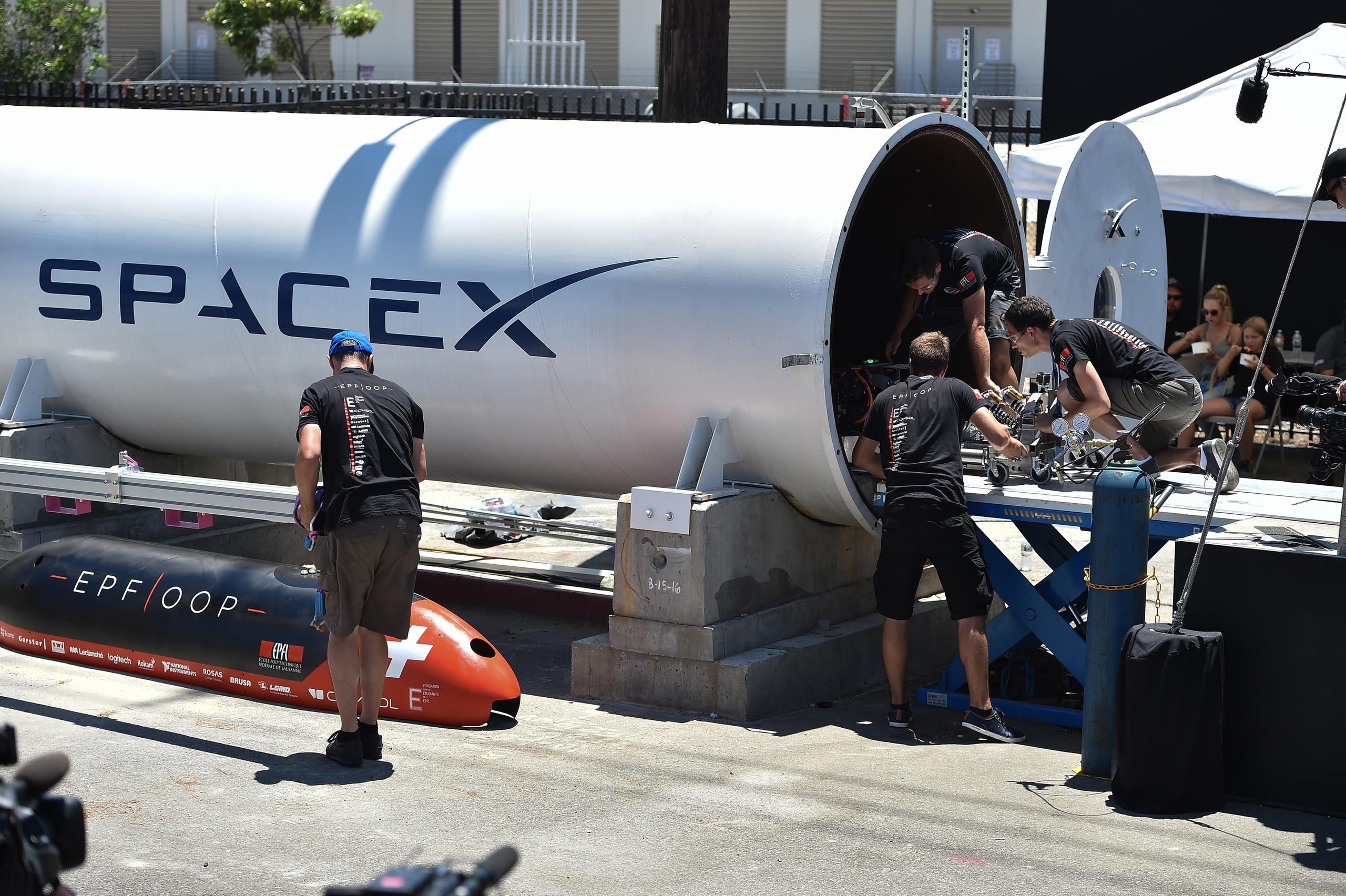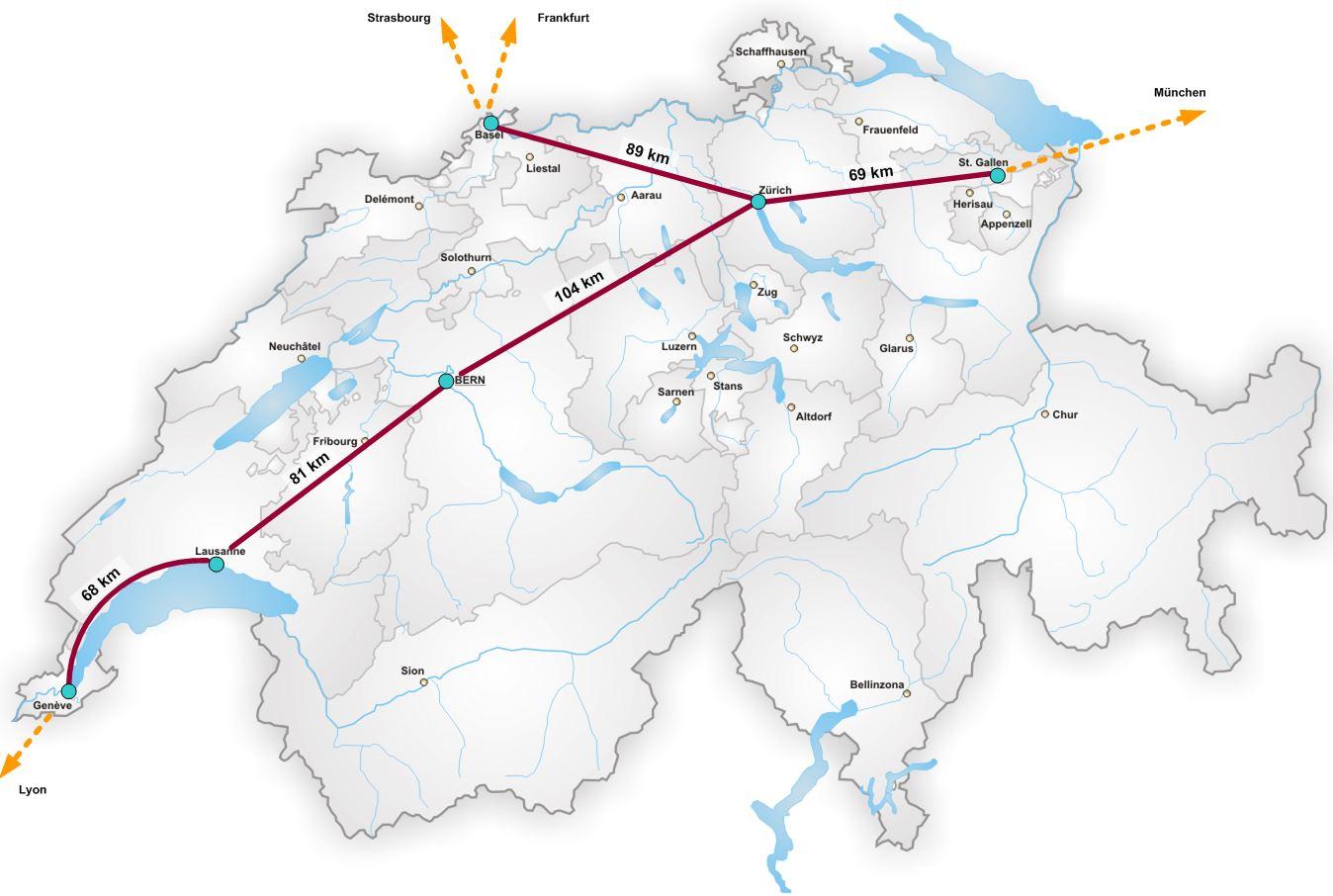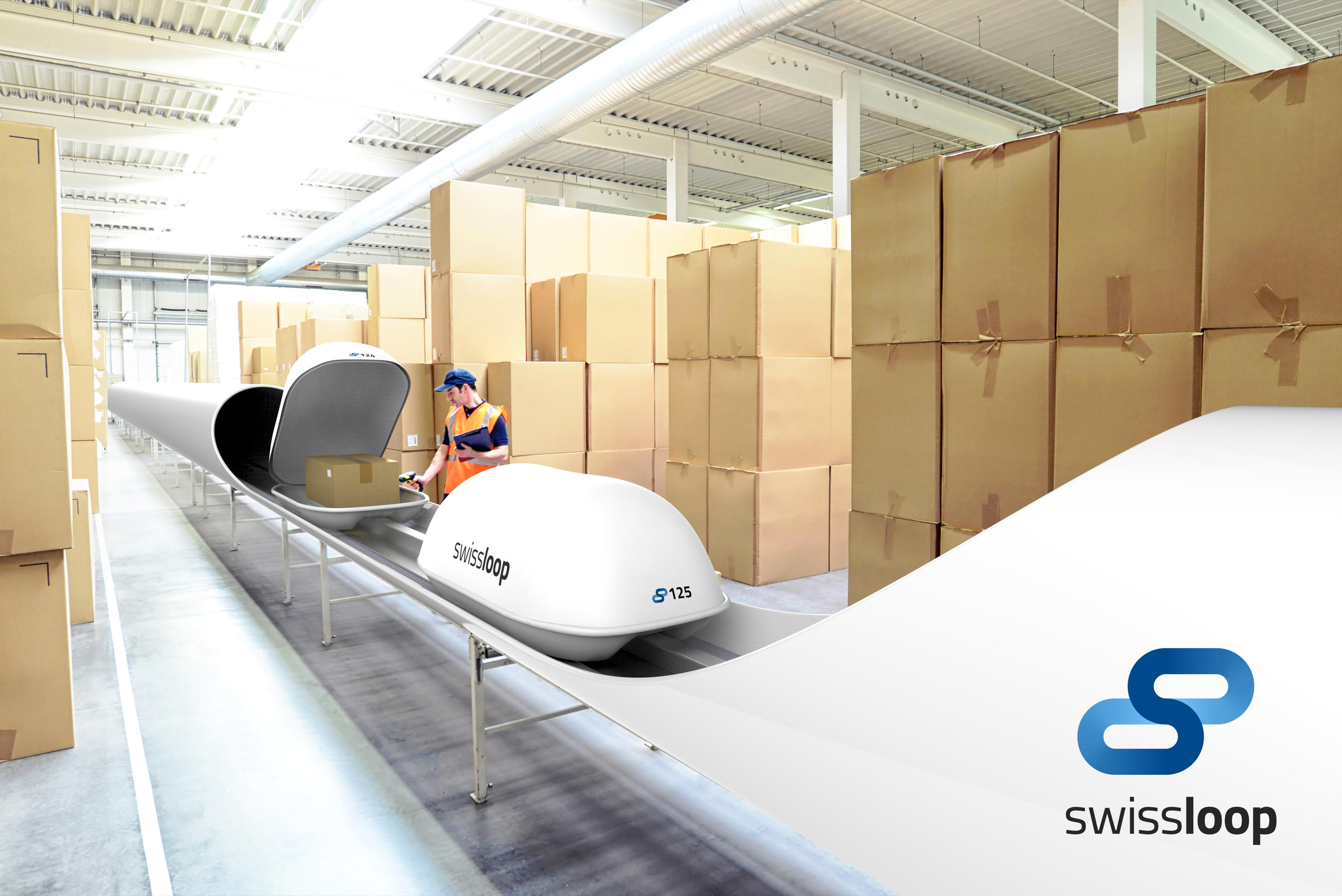
Are super-fast Swiss railway plans gaining momentum?

Businessman and creative whirlwind Elon Musk wants to revolutionise transportation with a super-fast system that sends magnetic passenger pods through a vacuum tube at the speed of sound. But the futuristic concept isn’t entirely new to Switzerland.
A similar project—the SwissmetroExternal link—was discussed in Switzerland decades ago but was ultimately abandoned. Could the growing popularity of Musk’s “HyperloopExternal link” breathe new life to the Swiss version?

Marcel Jufer certainly hopes so. He was the promoter of the idea of an arrow-fast magnetic levitation train that would travel through tunnels beneath Switzerland. The project was scrapped in 2009 due to lack of financing. But there are signs of tailwind in the wake of the Musk initiative.
“It is impossible to build new railway lines in Switzerland,” says Jufer, pointing out hurdles ranging from political opposition to high land prices and the overall difficulty of building through cities. “If we want to go faster, we need a new transport system. And this is only possible underground.”
He considers the optimum speed in the vacuum tubes to be between 400 and 500 kilometres per hour (250-300 miles per hour). A higher speed makes no sense because of the short distances in Switzerland, Jufer says.
Feasibility study required
“It is good to stimulate the interest of young engineers and thus keep the topic up to date and whip up enthusiasm for it again – in industry and research, but also in the population,” says Silvio Foiera, the secretary general of the SwissMetro-NGExternal link (NG=Next Generation). He is committed to putting the project of super-fast passenger transport back on the political agenda.
The capacity of the Swiss rail network is already under pressure today, and disruptions are increasing. Passenger volume is expected to double by 2040. “We are heading for a bottleneck that cannot be solved with common technologies or more,” he warns.
It is now up to the politicians, and “whether they are prepared to break new ground”, Foiera says. “This was our aim when we requested a feasibility studyExternal link during the consultation on the expansion of the railway infrastructure for 2030/35: [to see] whether this makes sense for Switzerland, also in terms of spatial planning.”
Only freight at first?
Students at the Swiss Federal Institutes of Technology in Zurich and Lausanne (ETHZ and EPFL, respectively) want to make smaller pods, and are interested in revolutionising freight transport in Switzerland.
“That would be a small, underground vacuum tube that could connect the larger conurbations of Switzerland underground,” says Gabriela Fernandes, who leads financing and sponsorship for the ETHZ project “SwissloopExternal link” Swissloop was one of two Swiss projects to compete in the international Hyperloop Pod Competition, aimed at turning Musk’s Hyperloop dream into a reality, this past July.

Fernandes counters the objection that a similar project is already being planned in Switzerland with the underground freight railway Cargo Sous TerrainExternal link (CST). “CST would make sense for a large part of freight transport. For shipments that have to be delivered quickly – ‘same day delivery’ – CST does not cover the demand. The two approaches to freight transport could be combined with a faster and a slower system.”
Denis Tudor, technical director of EPFL’s project “EPFLoopExternal link“, also wants to build infrastructure in Switzerland. “The best way would be to start with goods and check all critical parameters in a vacuum. Then you can rethink the infrastructure for passenger transportation.”
Jufer, however, sees little sense in a super-fast freight railway. “I can imagine that it might be interesting to have a fast transport system for goods between Los Angeles and New York, for example. But not in Switzerland.”
First commercial projects
Virgin Hyperloop OneExternal link and Hyperloop Transportation Technologies External link(HTT) are currently the leading private companies in this new transport sector. Both plan to build routes in different regions of the world to transport goods or people.
HTT announced in 2017 that it will be operating in Toulouse, France.

In compliance with the JTI standards
More: SWI swissinfo.ch certified by the Journalism Trust Initiative






























You can find an overview of ongoing debates with our journalists here . Please join us!
If you want to start a conversation about a topic raised in this article or want to report factual errors, email us at english@swissinfo.ch.